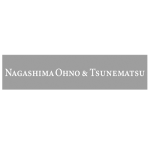On April 4 2022, Tokyo Stock Exchange, Inc. (TSE) restructured the cash equity market, reorganising the conventional five market segments: First Section, Second Section, Mothers, and JASDAQ (split into Standard and Growth). These were restructured into three new market segments; Prime, Standard, and Growth.
After the TSE market reorganisation, in order to be listed on the TSE, companies now must satisfy the initial listing requirements and continued listing requirements for each market in the new market segments. The requirements include stricter details than before, and one of them is the requirement for tradable shares, the definition of which has been revised in accordance with the TSE market reorganisation.
Below are the outlines of the new initial listing requirements and continued listing requirements regarding tradable shares and the redefinition of tradable shares.
Market segment
|
Number of tradable shares |
Market capitalisation of tradable shares |
Ratio of tradable shares |
Prime |
20,000 units or more |
JPY 10 billion [$78.3 million on April 26 2022] or more |
35% or more |
Standard |
2,000 units or more |
JPY 1 billion or more |
25% or more |
Growth |
1,000 units or more |
JPY 500 million or more |
25% or more
|
Redefinition of tradable shares
Under the conventional definition, tradable shares were defined as listed shares excluding “shares held by shareholders who hold 10% or more of the listed shares,” “shares held by management,” “treasury stocks,” and, for initial public offerings (IPOs) and assignment to the First Section, “shares held by related parties with special interest, other than management”.
Under the definition introduced upon the TSE market reorganisation, in addition to the conventional criteria as described above, some other shares are excluded from tradable shares, even if they are held by shareholders who hold less than 10% of the listed shares. These include two definitions which are expanded upon below:
“Listed shares held by domestic banks, insurance companies, or business corporations (corporations other than financial institutions and financial instruments business operators)”; and
“Shares that TSE deems inappropriate to treat as tradable shares” are excluded from tradable shares.
Listed shares held by domestic banks, insurance companies, or business corporations
"Banks” shall mean city banks and regional banks, and shall not include trust banks (including trust accounts), shinkin banks, credit unions, labour banks, agriculture-related financial institutions, government-related financial institutions, securities finance companies, and so on.
“Insurance companies” shall mean life insurance companies and non-life insurance companies. “Business corporations” refer to all corporations with juridical personality other than financial institutions and financial instruments business operators, such as incorporated foundations, incorporated educational institutions, and medical corporations.
The holdings of overseas "banks, insurance companies, or business corporations " are not subject to the redefinition and are treated as tradable shares unless they meet other requirements such as shares held by shareholders who hold 10% or more of the listed shares. However, if the purpose of shareholding is for "pure investment" and there is a track record of stock trade in the last five years, these shares will be treated as tradable shares as an exception.
In cases where the listed company is not subject to the submission of a Large Shareholding Report (such as the case where the shareholding ratio is less than 5%), the confirmation of the purpose of shareholding and the track record will be based on the document prepared by the shareholder in accordance with the form prescribed by TSE, in addition to the statement in the "Purpose of shareholding" column of the Large Shareholding Report filed by the respective shareholders.
In addition, the TSE may confirm the relationship with the listed company and its future ownership policy with the shareholder who prepared and filed the above documents. In the initial listing examination of an unlisted company whose shares are not traded in the market, a track record of transactions is not required for the shares to be recognised as tradable shares. Similarly, no transaction record is required for shareholders at the time of initial listing, even within five years after the initial listing.
Definition of shares that TSE deems inappropriate to treat as tradable shares
The "shares that TSE deems inappropriate to treat as tradable shares" will be determined on a case by-case basis. Examples include, but are not limited to, cases when a shareholder who owns 10% or more of the listed shares divides and holds those shares under multiple accounts (fictitious person), even though the beneficial owners is the same, as if there were multiple shareholders with less than a 10% ownership ratio.
In listing on the TSE going forward, it is necessary to consider whether the initial listing requirements and continued listing requirements can be satisfied in light of the revised definition of tradable shares as described above. This would affect the capital strategy prior to, or after, the listing.
Yuichi Iteya
Associate, Nagashima Ohno & Tsunematsu
E: yuichi_iteya@noandt.com

